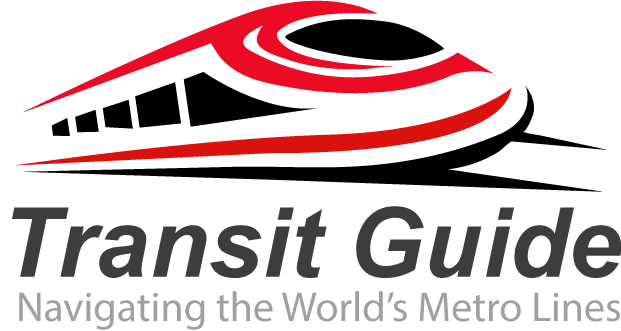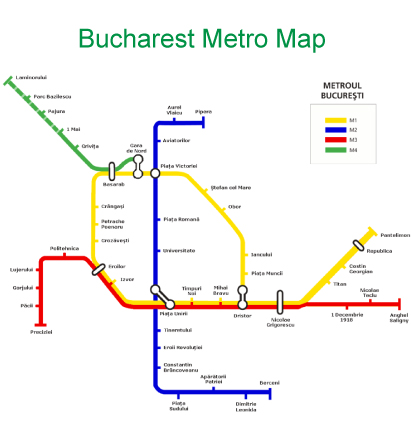The Bucharest Metro, known locally as “Metroul din București,” serves as the backbone of public transportation in Romania’s vibrant capital city. First opened for service on 16 November 1979, this extensive underground rapid transit system has evolved into one of Eastern Europe’s most comprehensive metro networks.
Network Overview and Statistics
The Metrorex system is 80.1 kilometres (49.8 mi) long and has 64 stations, making it significantly larger than other regional metro systems in Prague, Warsaw, or Budapest. Metrorex had an annual ridership of 142,783,000 passengers during 2023, demonstrating its crucial role in urban mobility for Bucharest’s approximately 2.3 million residents.
The metro operates as one part of Bucharest’s larger public transport ecosystem, working alongside the STB bus and tram network to provide comprehensive coverage across the metropolitan area.
Metro Lines and Routes
The Bucharest Metro has five lines (M1, M2, M3, M4, and M5), each serving distinct areas of the city:
Line M1 (Yellow): The original line opened in 1979, featuring a unique semi-circular route connecting major city districts. This line remains fundamental to the network’s operations.
Line M2 (Blue): Running north-south through the city center, M2 connects residential areas with business districts and major transport hubs.
Line M3 (Red): Spanning east-west, this line serves important commercial areas and provides connections to other transit options.
Line M4 (Green): Operating exclusively in northern Bucharest, M4 runs from 1Mai Station to Gara de Nord, serving the main railway station.
Line M5 (Orange): Opened on 15 September 2020, the first section, Râul Doamnei to Eroilor is around 7 km (4.3 mi) long with 10 stations. This addition marked a significant milestone in the network’s development, serving the densely populated Drumul Taberei district.
Recent Developments and Future Expansion
After Romania joined the European Union in 2007, EU funds helped with the expansion of the metro. The M5 line represents the most recent major expansion, finally providing metro access to the Drumul Taberei neighborhood after decades of planning.
Currently, the M6 line is under construction, which will connect Gara de Nord railway station directly to Henri Coandă International Airport in Otopeni, significantly improving airport connectivity for travelers and residents alike.
Key Features and Accessibility
The Bucharest Metro system stands out for several reasons. Unlike many European metros, Bucharest’s network was designed with wide stations and platforms, accommodating heavy passenger loads during peak hours. The system uses both modern and legacy rolling stock, with newer trains featuring air conditioning and improved accessibility features.
Station architecture varies throughout the network, with older stations showcasing communist-era design elements while newer additions feature contemporary aesthetics. Many stations serve as important interchange points, connecting different metro lines and surface transportation options.
Practical Information for Users
The metro operates daily with frequent service during peak hours, making it an efficient choice for both commuters and tourists. Tickets can be purchased at station booths or automated machines, with various options available including single rides, day passes, and monthly subscriptions.
Major tourist attractions accessible via metro include the Old Town, University area, and various cultural sites. The network’s comprehensive coverage makes it an excellent option for visitors exploring Bucharest’s diverse neighborhoods and attractions.
The Bucharest Metro continues evolving as a modern urban transit system, balancing its historical significance with contemporary transportation needs, ensuring it remains central to the city’s mobility infrastructure for generations to come.

